Everything You Need To Know About Slow Travel
VACATION IN THE SLOW LANE
EVERYTHING YOU NEED TO KNOW ABOUT SLOW TRAVEL

If you didn’t post a photo in front of the Reclining Buddha, did you even go to Bangkok? The age of social media has inspired a tourism boom, the effects of which are felt around the world. The bucket lists and wanderlust can create many positives – as in Iceland, where a massive rise in tourism helped the country emerge from a financial crisis.

It is increasingly apparent that there is a more responsible, and enjoyable, way to see the world.
Too Much Of A Good Thing: Overtourism
Unfortunately, there is a less flattering angle to the rise of travel. In the Philippines, the picturesque Boracay Beach was closed to visitors after overtourism threatened fragile marine ecosystems. Residents of Venice, Italy, often resent tourists trampling all over the city with packed lunches, only to leave after they get their selfie. The city recently imposed an entrance fee to curb crowds.
Whirlwind trips that attempt to cover as many sites as possible are not necessarily the best experience for the traveler, either. It can leave you feeling more tired than when you left for vacation. Plus, if you spend time only around the Eiffel Tower or Machu Picchu, you might miss the hidden corners that reveal the true characters of Paris or Peru.
It is increasingly apparent that we can see the world in a more responsible and enjoyable way.
One approach is to simply slow down. The practice even has a name: slow travel. The antidote to exhausting checklist tourism, it is being embraced by full-time digital nomads (who blog about it at length) and also 9-to-5 employees on holiday. You don’t need a lot of time to travel slowly.
LIVE LIKE A LOCAL
The gist of slow travel is that you travel to fewer places, spend more time in each destination, and live like a local rather than a tourist. Proponents of the movement say it puts less stress on travelers and locals, it’s cost effective, and it can be less damaging to the environment.
Below are some ways you can practice slow travel on your next holiday.
1
PLAN FOR NO PLANS
If you have only a week of vacation time, stay in the same place for the entire week. Allow time to get to know your surroundings and discover things you can’t find in a guidebook. If you loved a café, go back. Get to know the people serving your coffee. They’ll probably have good advice on what to see and where else to eat.


2
STAY IN IF YOU FEEL LIKE IT
Try out the local market, and cook in your vacation rental. See how your favorite recipes taste with unfamiliar spices and produce
3
BE A NEIGHBOR
Rent a home or apartment. Take it one step further, and house-sit or do a homestay. You likely can get a much better feel for a place when you choose to stay in a neighborhood instead of a resort or the downtown hotel district. You probably won’t have your sheets changed every day, but you may get a better feel for the local culture
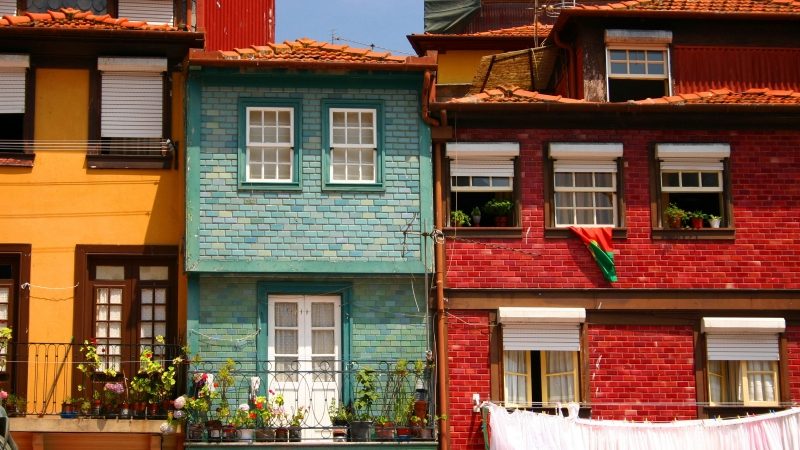

4
FIND YOUR PEOPLE
Love kayaking? Brewing beer? Crochet? Seek out local clubs or festivals.
5
SLOW DOWN. LITERALLY
When you’re traveling somewhere like Europe or Japan, take the long route, and travel via train. There’s much more to see below cruising altitude. After reaching your destination, bike, walk, and smell the roses. If you’re not going far, there’s nothing like public transit to get a feel for the locals’ daily life. You can even take it to the Reclining Buddha or the Eiffel Tower.
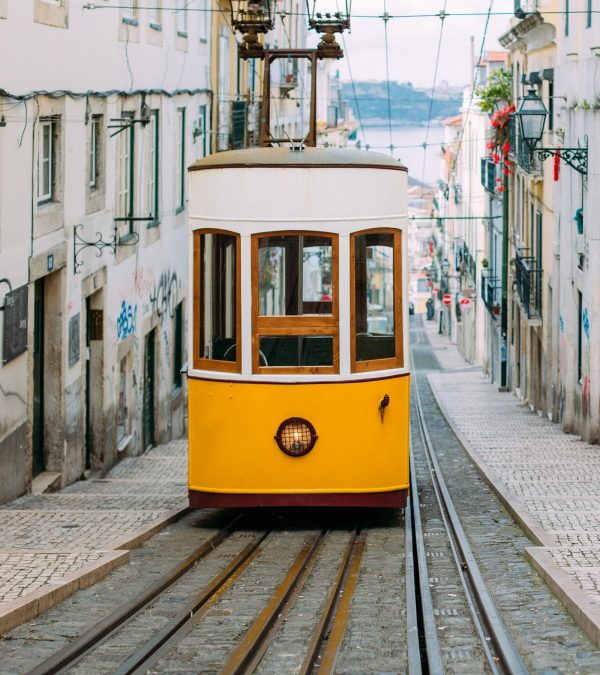
YOU MAY ALSO LIKE
FROM POLAND TO JAPAN IN AN ELECTRIC VEHICLE
LEAVING NO TRACE
FROM POLAND TO JAPAN IN A ZERO-EMISSION NISSAN LEAF

In physics, there’s a theory called the Observer Effect. It states that simply observing a situation or phenomenon necessarily changes that phenomenon.
The same happens in travel. An influx of visitors to the temple complex in Angkor Wat, Cambodia, have created such wear and tear that many sections have had to be repaired or closed.
It‘s easy to see how tourism can create a negative physical effect where we travel. But looking deeper, we’re learning that there’s a less visible, but perhaps more damaging effect on the culture and economy of the destinations we visit.
A NEW WAY TO TRAVEL OUR WORLD
Some people are exploring new ways to see things authentically as they are, and do as little harm in the process. Welcome to sustainable travel.
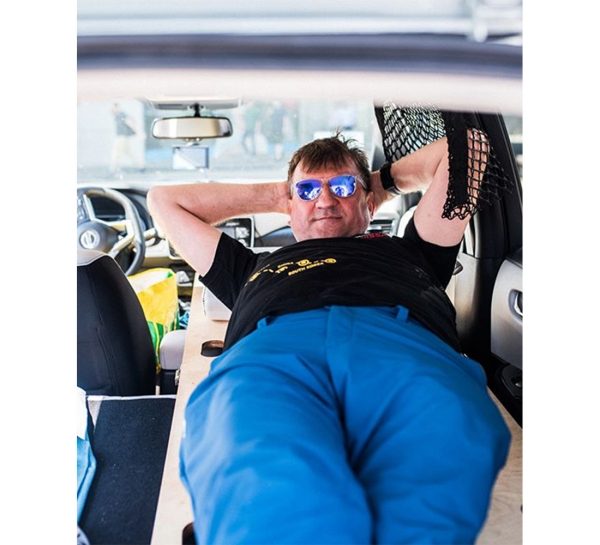
MEET MAREK KAMINSKI Polar explorer, author, photographer, and entrepreneur.
Kaminski recently took a 3-month, 16,000 km road trip from Zakopane, Poland to Tokyo, Japan in a zero-emission Nissan LEAF. Named #NoTraceExpedition, he passed through eight countries over two continents, including some of the most rugged terrain in Russia, Mongolia, and China. Sustainability for the trip went beyond creating no carbon emissions. Marek set things up to minimize the formation of garbage, while creating a house on wheels: tent, repair kit, food and cooking supplies – even a bed that let him stretch out full-length inside the LEAF.
He’s no stranger to extreme travel – he’s the first man to have visited the North and South Poles in the same year – and he did this solo. While this got him in the Guinness book of records, his real reward is to save the planet, and make the world we live in better for everyone. He even created a foundation that assists young people with disabilities, helping them travel to the polar regions, even having them take part in actual expeditions.
"For me, this journey
is not just about reaching my destination – it is also about
making a simple, brilliant change to be more
sustainable…"
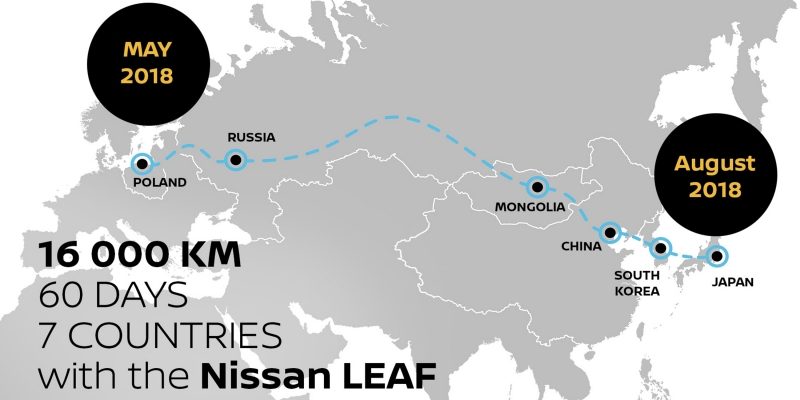
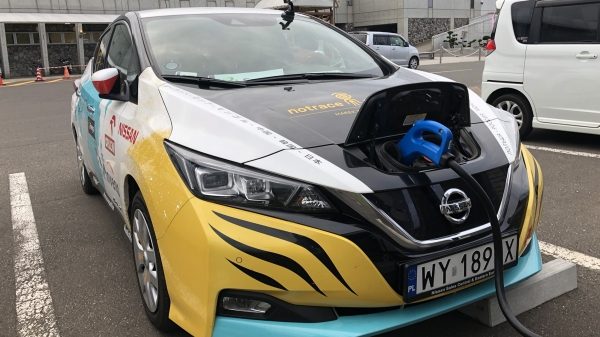
MORE OPPORTUNITIES TO CONNECT AND LEARN
While covering this much ground in a 100% electric vehicle provides some unique challenges, it has rewards, too. The time required to charge his LEAF gave him the opportunity to spend time with local communities, to learn about them, and share the vision of sustainable travel. From modern cities in Russia, China, and Japan, to rural communities in Siberia and Mongolia – some that had never seen an electric vehicle before – Marek and his LEAF saw it all.
And while the roads, weather conditions, languages and cultures were vast and diverse, he also found common ground where a concern about our planet, and a commitment to make a brighter future were common themes.
"People understand that
travelling long distance by EV is
not easy, but they really
understood you care about the
environment, so they want to
help with electricity, food, a place
to stay"
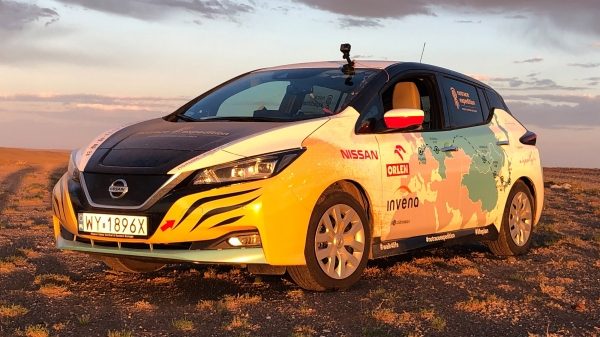
PERFECT TRAVELING PARTNER
Just as interesting, Kaminski’s LEAF had almost no modifications to take on this legendary journey. To allow him to plug in the car to a variety of charging equipment he might encounter, Marek had a versatile set of adapters custom-built.
The LEAF proved to be 100% reliable during his expedition, with no breakdowns of any kind. He points out that the ProPILOT – Nissan’s hands-on driving assistant designed to help drivers during long highway trips and stop and go traffic helped keep him relaxed on long stints behind the wheel.
"The quietness of an EV makes the drive much easier – like a moving meditation – letting me enjoy what I see, giving me quiet time to think..."
EXPLORING FARTHER AND SMARTER
While that epic journey might seem like a once-in-a-lifetime trip, Kaminski and NoTrace are getting ready for an even greater journey. In 2019, he plans to drive a Nissan EV on a global expedition to share the vision and the reality of sustainable travel and living. Exciting new technologies will be along for the ride; Marek will provide a prototype artificial intelligence
system that he’ll use as his copilot, designed not only to help guide, but to study global climate situations.
AI will be a next-level addition to a skill set he developed on the first NoTrace Expedition – driving in typhoons, snow storms, thunderstorms and more. He says the 16,000-kilometer trip gave him 16,000 pieces of information.
READY FOR YOUR OWN EXPEDITION?
While Marek’s resume makes him superbly capable for this journey, he says sustainable travel is for everyone – even a grand adventure in an EV. His advice – “Be prepared, but don’t be afraid”. The trick is planning, planning, planning.
With social media and the internet, you can find like-minded enthusiasts to help you. And with an EV, a little special care is needed to make sure you can find places to charge – and ways to pay for them. Some require special charge cards that you’ll need to order in advance. It’s worth doing -the rewards of seeing the world, the people and the environment we all share far outweigh the challenges.
So, without a drop of gas used, in places that may have never even seen an EV, Marek and his Nissan LEAF have created an entirely new vision of road travel. And have seen some amazing things in the process.
CHECK OUT THIS NISSAN WITH ZERO EMISSIONS ELECTRIC POWER
NISSAN LEAF
LEARN ABOUT NISSAN LEAF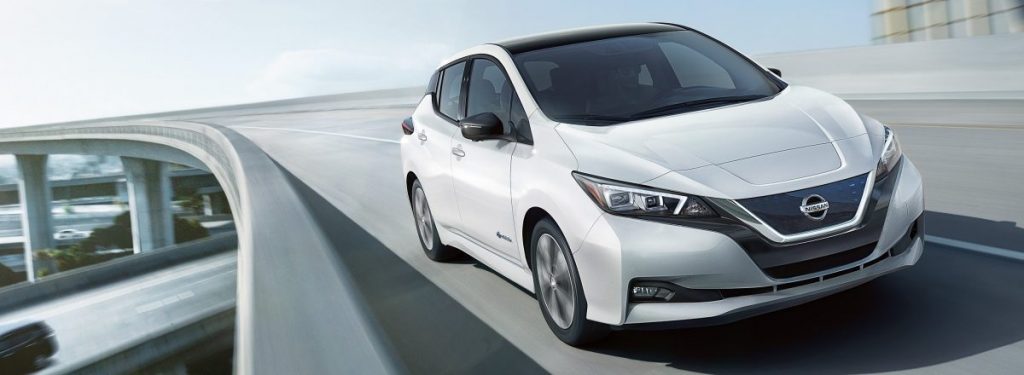
YOU MAY ALSO LIKE
10 WAYS TO BE SUSTAINABLY STYLISH
GOING GREEN LOOKS GOOD ON YOU
10 WAYS TO BE SUSTAINABLY STYLISH

Your coworker shows up wearing a cool shirt on Monday, so naturally you ask him where he bought it. With a couple of taps on your computer or smartphone, you can have that same shirt waiting at home for you to wear on Friday. In this scenario, being a shirt copier isn’t the biggest offense. Research into the fast fashion industry, however, shows that our need for instant gratification with clothes takes a notable human and environmental toll.
Fortunately, with moderate willpower and a little effort, you can be kind to the planet and still have a social-media worthy closet.

HERE’S HOW TO BE SUSTAINABLE AND STYLISH:
SHOP RESPONSIBLY
1. Think hard about your shopping cart. When we impulse-buy cheap trendy clothes, we contribute to a wasteful system that’s harming the environment. Try shopping vintage instead.
2. Invest in durability and timeless pieces. Make all the materials and labour that went into your clothes mean something.
3. Rent for events. There’s no longer a reason to spend a fortune on an outfit that will be worn for only one night. Plus, you can wear designer styles for a fraction of the retail price.
4. Know who made your clothes. You can feel better about supporting companies with fair labour practices and a transparent sustainability mission.

HANDLE CAREFULLY
5. Show your garments some TLC. Wear what you love longer by patching holes and re-heeling shoes. It’s much more affordable than buying new, and you can show some support to your neighbourhood shoe repair.
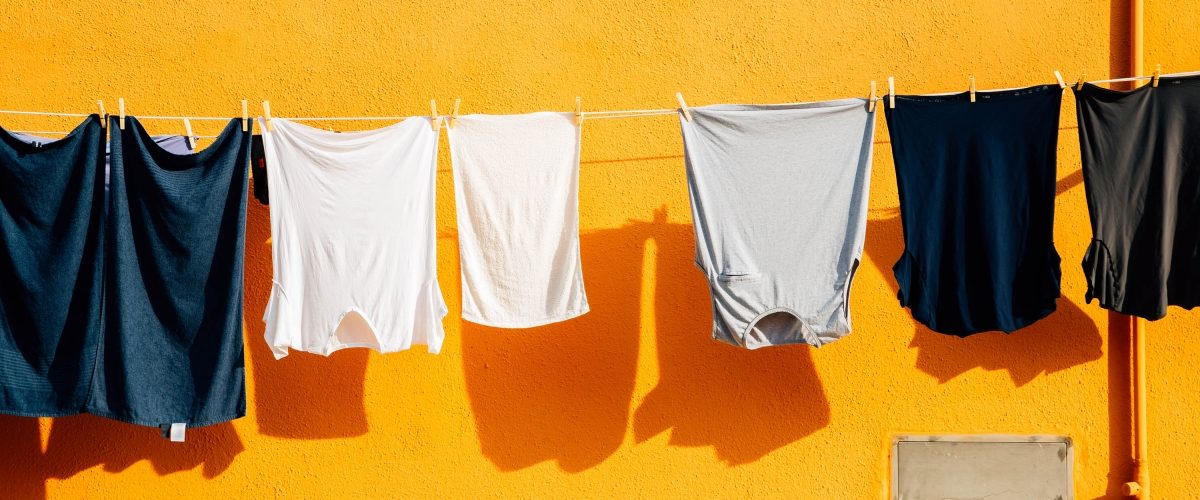
6. Wash less, and wash consciously. Dirty laundry = cleaner planet. And when laundry day can’t be pushed out any further, wash with cold water and hang dry. Even switching from hot to warm water can cut a load’s energy use in half.
7. Avoid buying clothes that are dry clean only. If you absolutely have to dry clean, search for an environmentally friendly cleaner.
RECYCLE STRATEGICALLY
8. Trash nothing. Your weathered items are destined for a more glamourous retirement than turning into dish rags, and a quick online search helps you find companies that will upcycle for you. For example, some major footwear companies collect run-down sneakers and use the materials to build things like running tracks and playgrounds

9. Sell your old clothes online. There are tons of apps and online communities that make it easy to clear out your closet and fill your wallet.
10. Host clothing swaps with your friends to refresh your closet for free. Maybe your coworker is sick of that shirt anyway.
YOU MAY ALSO LIKE
HOSPITALITY HONED OVER A THOUSAND YEARS
THE SPIRIT OF OMOTENASHI
HOSPITALITY HONED OVER A THOUSAND YEARS

As far back as the 8th century, the traditional Japanese inn, or ryokan, offered respite to weary travelers. Picture in your mind traders carrying their wares along the famed Tokaido road that linked Kyoto to the capital city of Edo (modern day Tokyo). Later, it was samurai traveling to meet their shogun. Along with getting a good night’s rest and comforting food, travelers could also soak in an onsen, or hot spring, to ease the aches and pains of such an arduous journey. Incredibly, over a thousand years later, the same experience can still be had today. What makes such longevity possible? One word: omotenashi.
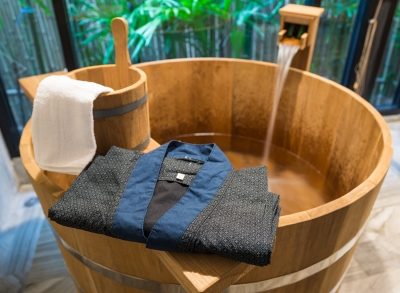
WHAT IS OMOTENASHI?
A devotion to omotenashi, or bespoke hospitality, is at the heart of the ryokan experience. But omotenashi is more than just providing a welcoming environment. Omote means “public face,” an image you wish to present to outsiders. Nashi means “nothing.” Together it means a selfless service that is pure, with an open heart. It’s anticipating guests’ needs without any expectation of reward. To what extreme can that be taken? In the days of the samurai, it meant designing the ryokan itself with the specific needs of the guest in mind. Ryokan were built with low doors, narrow stairwells, and small entrances to protect the guests from their sword-wielding enemies.
The tradition is said to come from a more peaceful place: the Japanese tea ceremony. This can be traced back to Sen no Rikyu, the grandfather of the Japanese tea ceremony. His artful way of entertaining included a multi-course meal and tea prepared right in front of his guests. But the meal went beyond accommodating his guests’ physical hunger. To satisfy aesthetic and intellectual needs, the mind as well as the body, the experience included a thoughtfully curated poem, a seasonal flower arrangement, and always engaging discussion. It was known as ichi-go ichi-e, “a once in a lifetime experience.”
...your every need and desire seems to be anticipated before you can even think to ask.
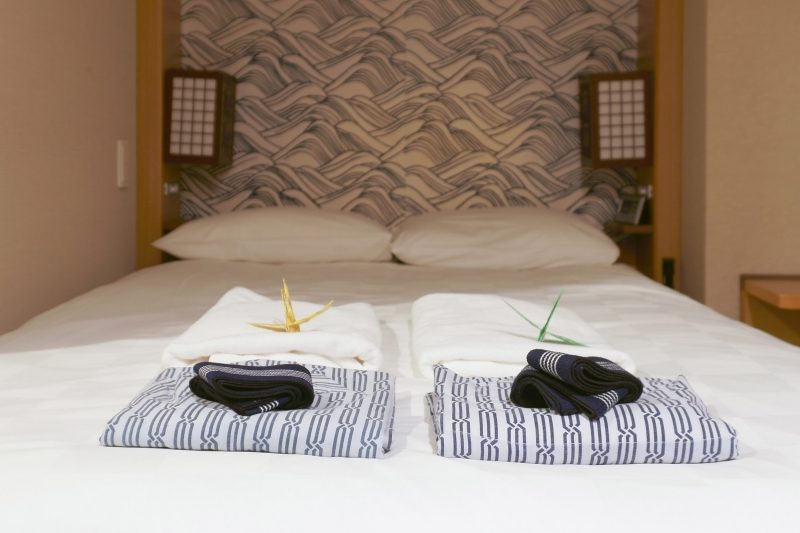
SERVICE THAT'S ALL ABOUT THE DETAILS
The essence of omotenashi still permeates the Japanese service industry today. It’s seen in the water and hot towel that appear after being seated at a restaurant, the bag holder on the ATM, and the staff members on the trains who bow to every passing passenger. Even the way food is carefully prepared and artfully laid out is inspired by omotenashi.
On that note, think of your experience in almost any sushi restaurant, anywhere in the world. The chefs are placed in the kitchen facing the customers over a long counter. They prepare the food in the open, nothing to hide, open hearted. They address each customer individually. Clearly, the spirit of omotenashi has translated well into our modern, daily lives, as well as across borders.

The spirit of omotenashi has translated well
across time, and across borders.
A MODERN TWIST ON OMOTENASHI
Omotenashi in the 21st century expresses itself in a surprising variety of ways. Hoteliers are mixing modern amenities with qualities of simplicity, serenity, and extreme hospitality to offer a taste of the traditional ryokan.
The Radium Kagaya International hotel in Taiwan, for example, embraces many traditional elements. Rooms have low tables and cushions, baths are fed by hot springs. Most important, a butler service of attendants schooled in the art of omotenashi are always waiting to deliver the highest levels of Japanese hospitality. However, alongside these customary touches, come modern ones. Think stellar views from the 16th floor, flat screens, and the latest craft cocktails.
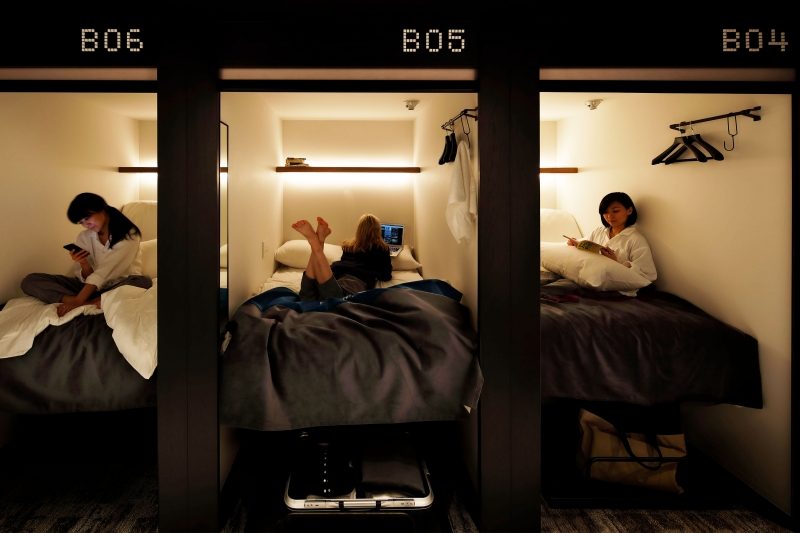
Could it be that in our digital age omotenashi also has a high-tech expression? A go-to for younger travelers, The Millennials Shibuya in Tokyo creates a bespoke experience through an app. Nestled in their Smart Capsule, guests use a smart device to personalise their stay. They can program their own wake-up so it all happens seamlessly. The alarm hums, lights come on gradually, their favourite morning show starts streaming – all as their bed gently lifts to an upright position. Yes, it seems that even our technology takes inspiration from Japan’s ancient devotion to selfless service.
CHECK OUT THIS NISSAN WITH ZERO EMISSIONS ELECTRIC POWER
NISSAN LEAF
LEARN ABOUT NISSAN LEAF









